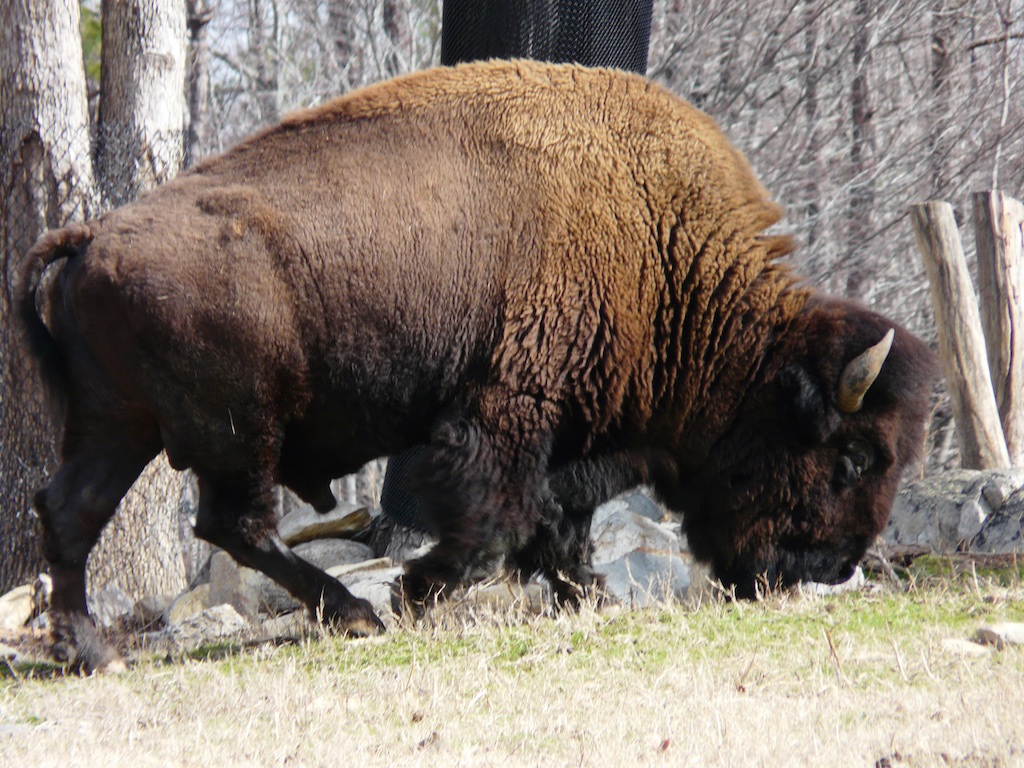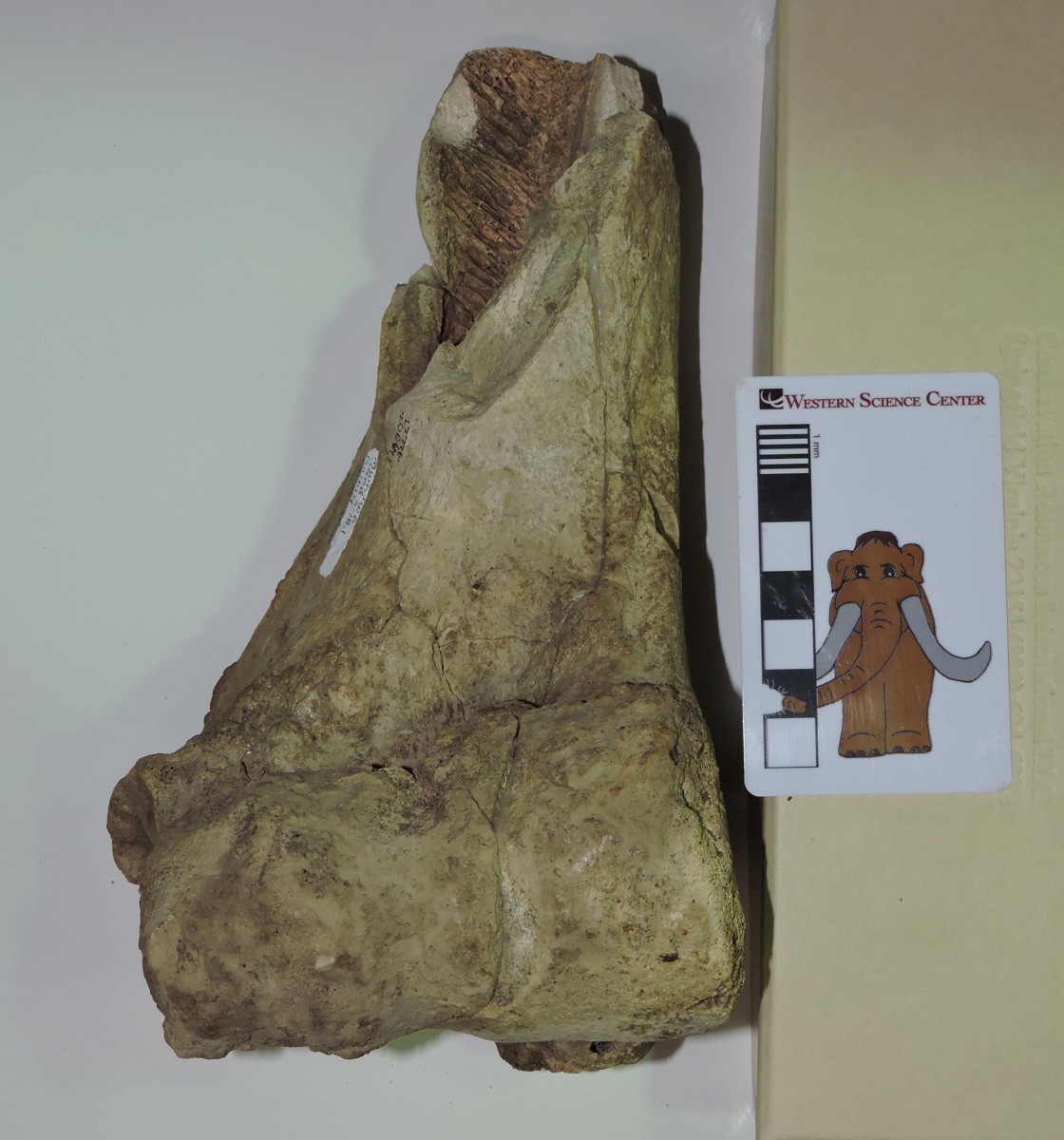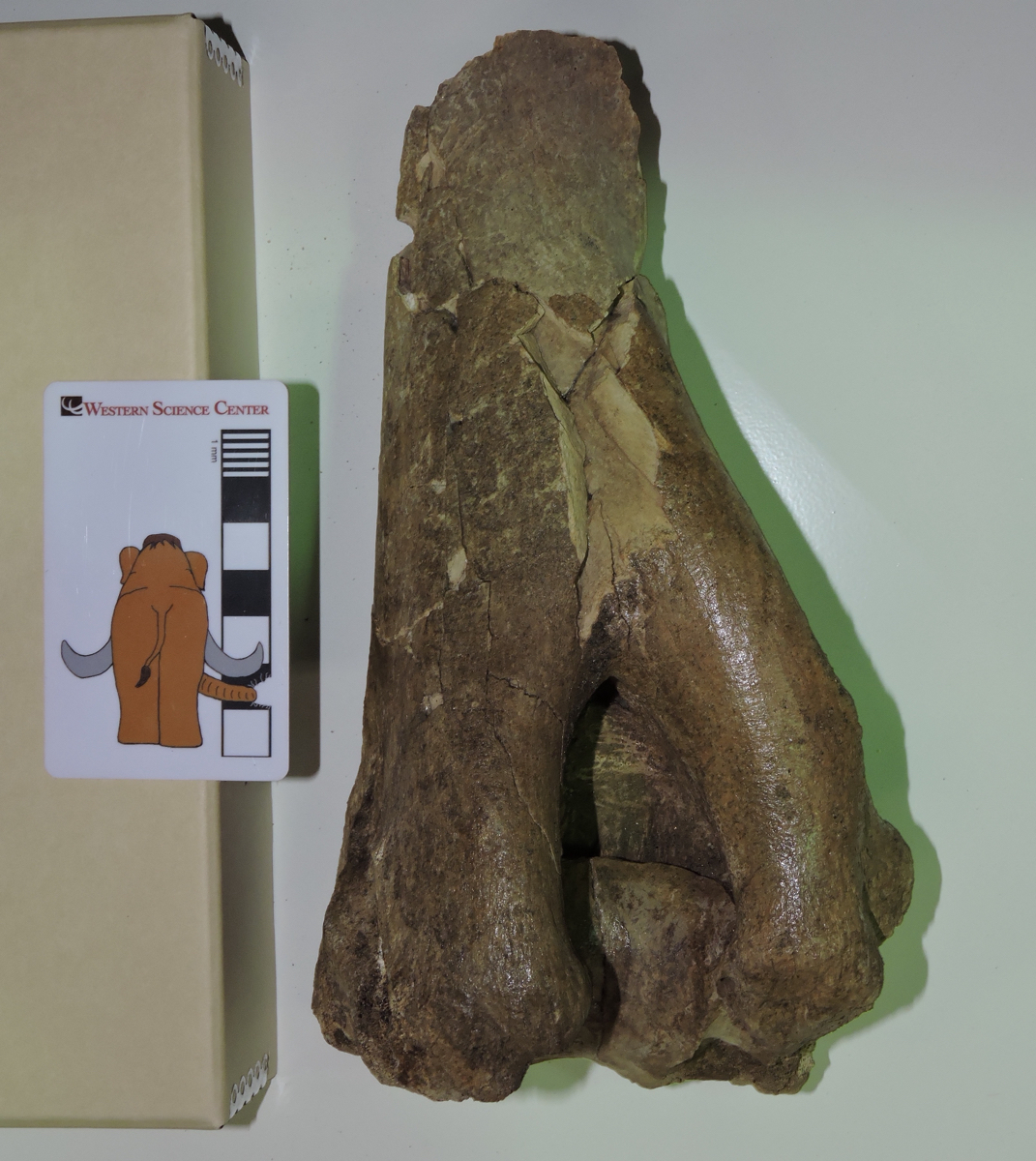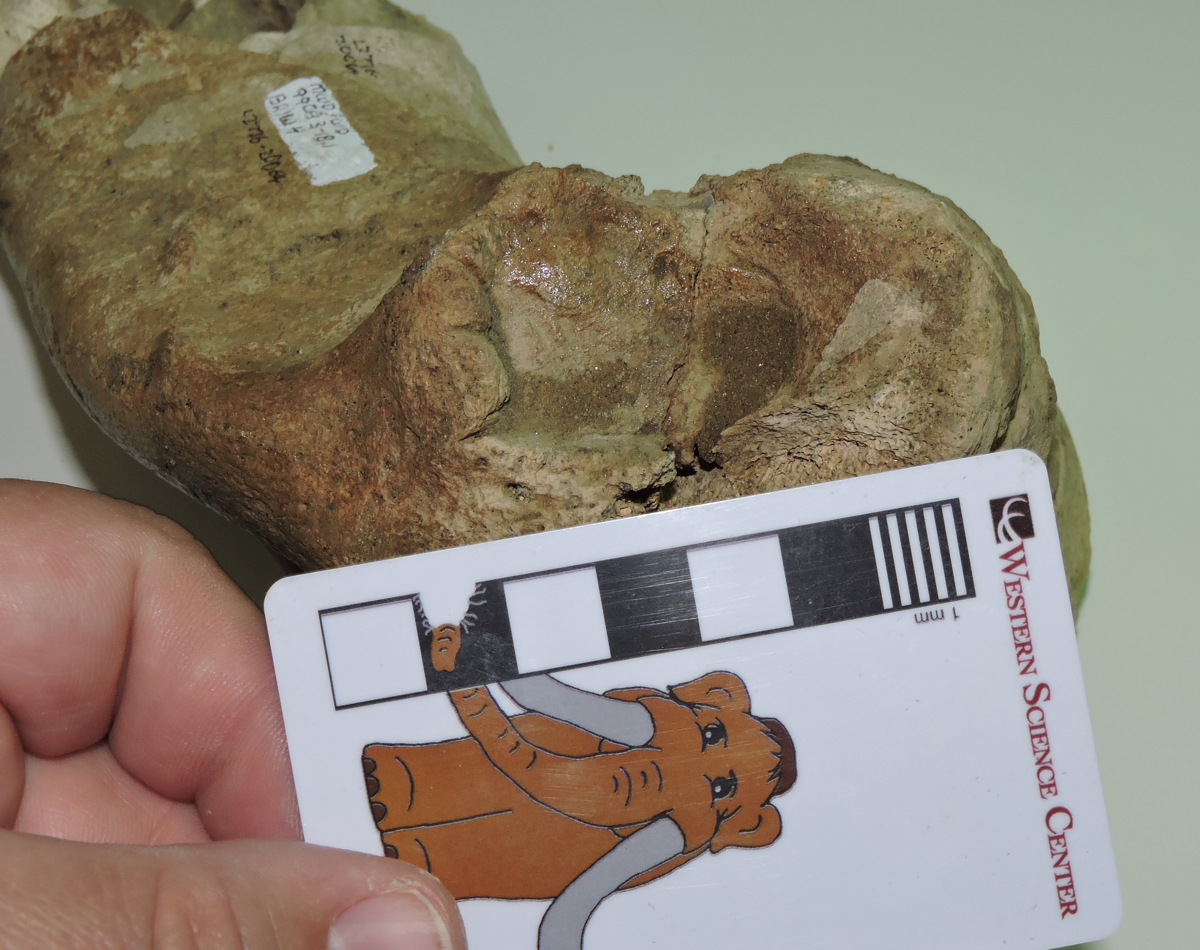 At first glance, bison seem to be rather oddly proportioned, with a relatively massive head and shoulders. And sometimes, things are exactly as they appear; bison really do have huge, heavy heads. Carrying around such a large head has effects on the rest of the body, and bison have strong neck vertebrae, long neural spines on the vertebrae over the shoulders, and robust forelimbs to help support the weight of the skull. This was even more of an issue for Pleistocene bison such as Bison latifrons and B. antiquus, with their relatively larger and heavier horns compared to the modern B. bison.Today's Fossil Friday specimen is part of the right humerus (upper arm bone) from a Pleistocene bison:
At first glance, bison seem to be rather oddly proportioned, with a relatively massive head and shoulders. And sometimes, things are exactly as they appear; bison really do have huge, heavy heads. Carrying around such a large head has effects on the rest of the body, and bison have strong neck vertebrae, long neural spines on the vertebrae over the shoulders, and robust forelimbs to help support the weight of the skull. This was even more of an issue for Pleistocene bison such as Bison latifrons and B. antiquus, with their relatively larger and heavier horns compared to the modern B. bison.Today's Fossil Friday specimen is part of the right humerus (upper arm bone) from a Pleistocene bison: It's shown above from the front (anterior or cranial view). This is only the distal part of the bone, with the elbow joint at the bottom. The proximal half with the ball joint at the shoulder is missing. This is a big, heavy bone; the articulation surface at the elbow is about 9 cm across.Here's the same bone from behind (posterior or caudal view):
It's shown above from the front (anterior or cranial view). This is only the distal part of the bone, with the elbow joint at the bottom. The proximal half with the ball joint at the shoulder is missing. This is a big, heavy bone; the articulation surface at the elbow is about 9 cm across.Here's the same bone from behind (posterior or caudal view): The large notch at the bottom is called the olecranon fossa. It accommodates a large projection on the connecting bone, the ulna, called the olecranon process. This process forms the point of the elbow, and serves as the attachment point for the triceps brachii muscle that extends the forelimb. When the triceps brachii is flexed, it straightens the forelimb, rotating ulna's olecranon process into the humerus' olecranon fossa.
The large notch at the bottom is called the olecranon fossa. It accommodates a large projection on the connecting bone, the ulna, called the olecranon process. This process forms the point of the elbow, and serves as the attachment point for the triceps brachii muscle that extends the forelimb. When the triceps brachii is flexed, it straightens the forelimb, rotating ulna's olecranon process into the humerus' olecranon fossa. Above is an oblique view of the lateral side of the humerus. The circular area above the scale bar is called the lateral epicondyle, and in this specimen it has a somewhat irregular shape and texture. This could be due to osteoarthritis, which wouldn't be surprising in the elbow joint of a heavy-headed animal such as a bison. The distal end of this humerus is fully fused to the rest of the bone (unlike the mastodon humerus we featured last week), suggesting that this bison was full grown at the time of its death.
Above is an oblique view of the lateral side of the humerus. The circular area above the scale bar is called the lateral epicondyle, and in this specimen it has a somewhat irregular shape and texture. This could be due to osteoarthritis, which wouldn't be surprising in the elbow joint of a heavy-headed animal such as a bison. The distal end of this humerus is fully fused to the rest of the bone (unlike the mastodon humerus we featured last week), suggesting that this bison was full grown at the time of its death.
